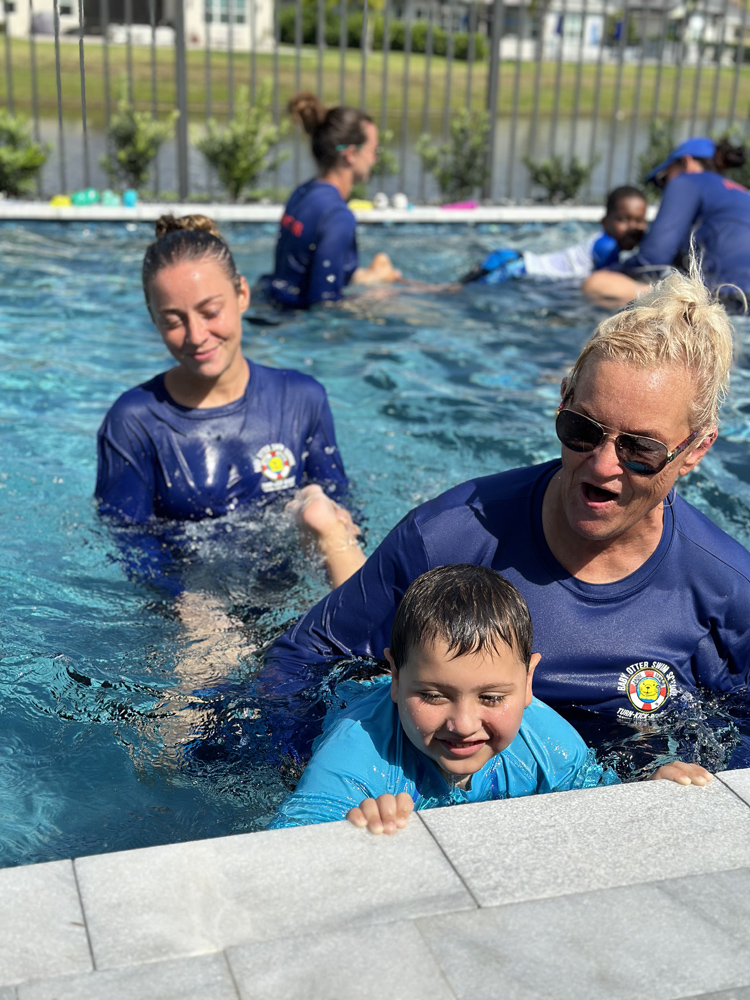Discover Why Swimming Lessons For Beginners Are Essential for Water Security
Discover Why Swimming Lessons For Beginners Are Essential for Water Security
Blog Article
Every Little Thing You Need to Find Out About Swimming Lesson for Beginners: A Comprehensive Overview
Recognizing the principles of swimming lessons for beginners is important for fostering both safety and ability advancement in the water. Picking a certified instructor that stresses a supportive discovering atmosphere sets the phase for success. As newbies start this marine trip, grasping important methods such as breathing and body placing becomes extremely important. Nevertheless, the course to coming to be a positive swimmer is commonly stuffed with difficulties, consisting of the common fear of water. What strategies can be utilized to make sure a positive and enriching experience for those simply beginning?
Significance of Water Security
Water safety is paramount for any person venturing into marine settings, especially newbies. Comprehending the potential threats linked with water tasks is critical to ensure a secure and satisfying experience. Stats indicate that sinking continues to be a leading source of unintended death, emphasizing the requirement for enhanced understanding and precautionary procedures.
The very first step in water security entails acknowledging the significance of supervision. Adults must always maintain a close eye on children and unskilled swimmers, as even superficial water can present substantial threats. Additionally, wearing ideal flotation tools, such as life vest, is important, specifically for those that are not yet confident in their swimming abilities.
One more crucial element is acquainting oneself with the details setting. Each body of water has special features, including currents, trends, and temperature level, which can impact safety and security. Swimmers need to likewise know weather condition conditions and possible threats, such as submerged objects or unexpected adjustments detailed.
Finding the Right Instructor
Choosing a certified instructor is an important action in making sure a secure and effective knowing experience for beginners. When looking for a teacher, consider their accreditations and experience. Try to find people that are licensed in CPR and First Help, along with those who hold recognized swimming mentor credentials, such as those from the American Red Cross or YMCA.

Furthermore, analyze the teacher's communication abilities. They need to be able to share instructions plainly and demonstrate strategies successfully. A link between the student and the instructor can boost motivation and foster a positive learning environment.
Last but not least, consider logistics such as class size, scheduling, and area. Smaller sized course sizes frequently permit more tailored attention, which can be useful for newbies. By carefully assessing these variables, you can find a trainer that will add to an effective swimming experience.
Necessary Swimming Methods
Grasping essential swimming strategies is vital for beginners intending to build self-confidence and proficiency in the water. The structure of reliable swimming depends on mastering the fundamental skills that boost both security and pleasure throughout technique.
Among the initial methods to concentrate on is proper breathing. Newbies ought to find out to breathe out undersea and breathe in swiftly when turning their heads sideways, ensuring a stable rhythm that sustains endurance. Furthermore, body placing plays a crucial function; swimmers should maintain a structured position, keeping the body straight and level to minimize drag.

Lastly, comprehending the importance of buoyancy can not be neglected. Understanding drifting strategies will certainly improve comfort and stability in the water. By concentrating on these essential methods, beginners can develop a solid swimming structure, setting them up for higher success in future lessons and advanced skills.
Various Swimming Designs
Various swimming designs exist, each offering distinct strategies and advantages that cater to various preferences and goals. The 4 main strokes-- freestyle, butterfly, breaststroke, and backstroke-- create the structure of competitive swimming and leisure techniques.
Freestyle, likewise recognized as the front crawl, is characterized by a flutter kick and alternating arm motions, enabling maximum rate and effectiveness. It is commonly one of the most popular choice for newbies as a result of its uncomplicated strategy and convenience in numerous water setups.
Backstroke, done on the back, utilizes a similar flutter kick but utilizes a windmill arm movement. This stroke boosts body positioning and promotes relaxation in the water, making it an exceptional option for those that may really feel nervous while swimming.
Breaststroke features a frog-like kick and synchronised arm activities, advertising a slower pace that permits boosted breathing control. This stroke is How To Become A Swim Instructor specifically beneficial for novices as it urges an all-natural rhythm.
Finally, the butterfly stroke, known for its challenging technique, integrates a dolphin kick and simultaneous arm motions. While even more innovative, mastering it can dramatically boost overall swimming efficiency. Welcoming these diverse styles can result in a well-rounded swimming experience.
Conquering Common Obstacles
Although swimming can be a rewarding task, newbies typically experience numerous challenges that might hinder their progression and satisfaction in the water. Beginning by accommodating to the water in superficial locations, and method breathing techniques outside of the water to construct self-confidence.
Another obstacle is grasping standard methods, such as drifting and stroke technicians. Newbies ought to concentrate on proper body alignment and breathing patterns. Using flotation protection tools can aid in developing a feeling of balance while exercising stroke basics.

Lastly, discovering a helpful atmosphere, whether via team lessons or individually coaching, can dramatically enhance discovering. Constructive feedback and inspiration are vital for fostering and overcoming obstacles improvement. By addressing these common problems head-on, newbies can grow a favorable swimming experience and progression at a comfy pace.
Final Thought
In recap, swimming lessons for novices include essential elements such as safety, efficient direction, and proficiency of important strategies. Focus on core skills, consisting of breathing and body positioning, aids in creating self-confidence in the water.
Recognizing the basics of swimming lessons for newbies is important for fostering both safety and security and ability advancement in the water.Water security is critical for any person venturing right into aquatic atmospheres, particularly newbies. Arm movements must additionally be collaborated with the kick; beginners ought to learn the significance of getting to ahead and drawing via the water successfully.
Although swimming can be a rewarding task, newbies typically run into different obstacles that might impede their progress and pleasure in the water. Beginning by adjusting to the water in superficial areas, and practice breathing techniques outside of the water to construct self-confidence.
Report this page